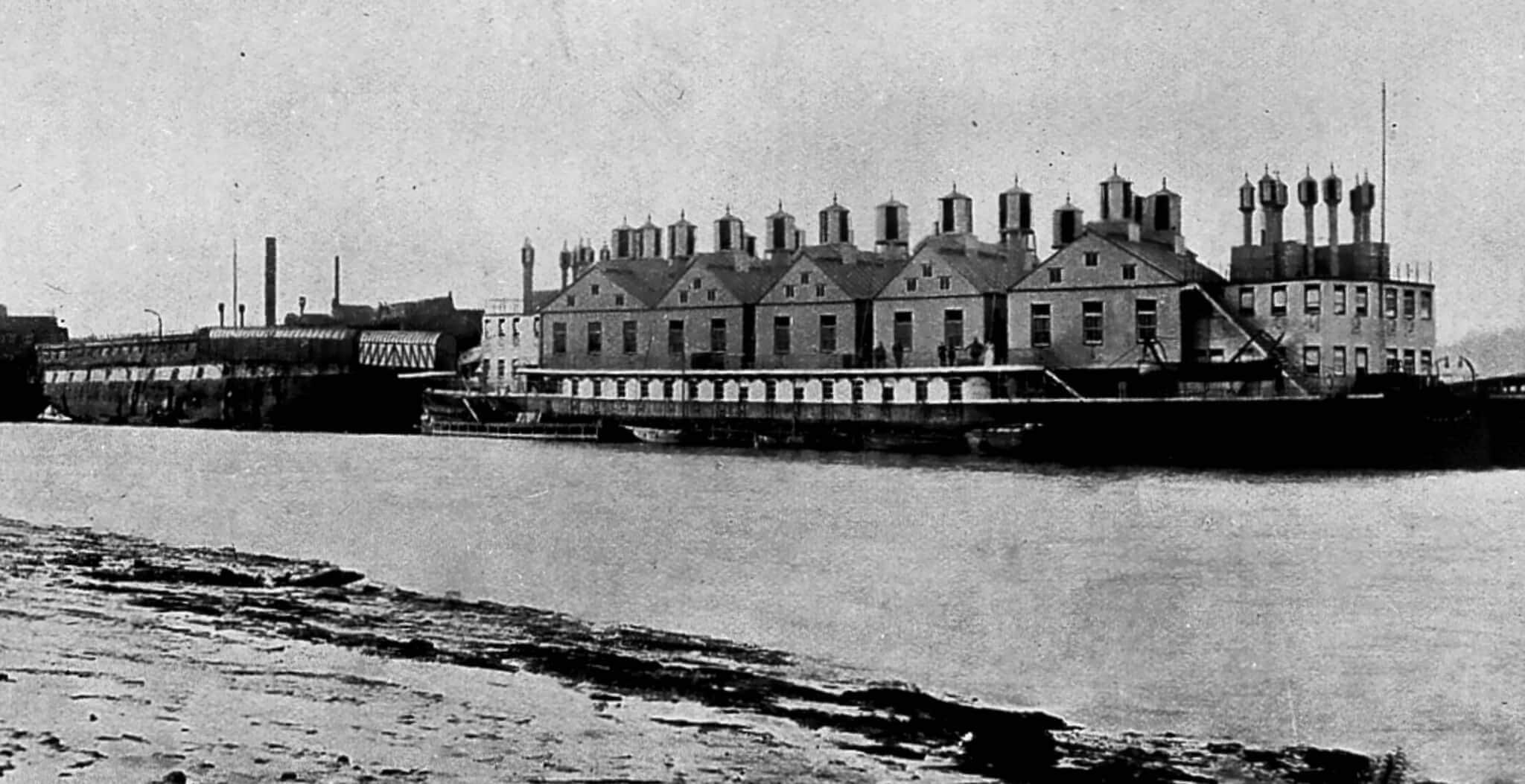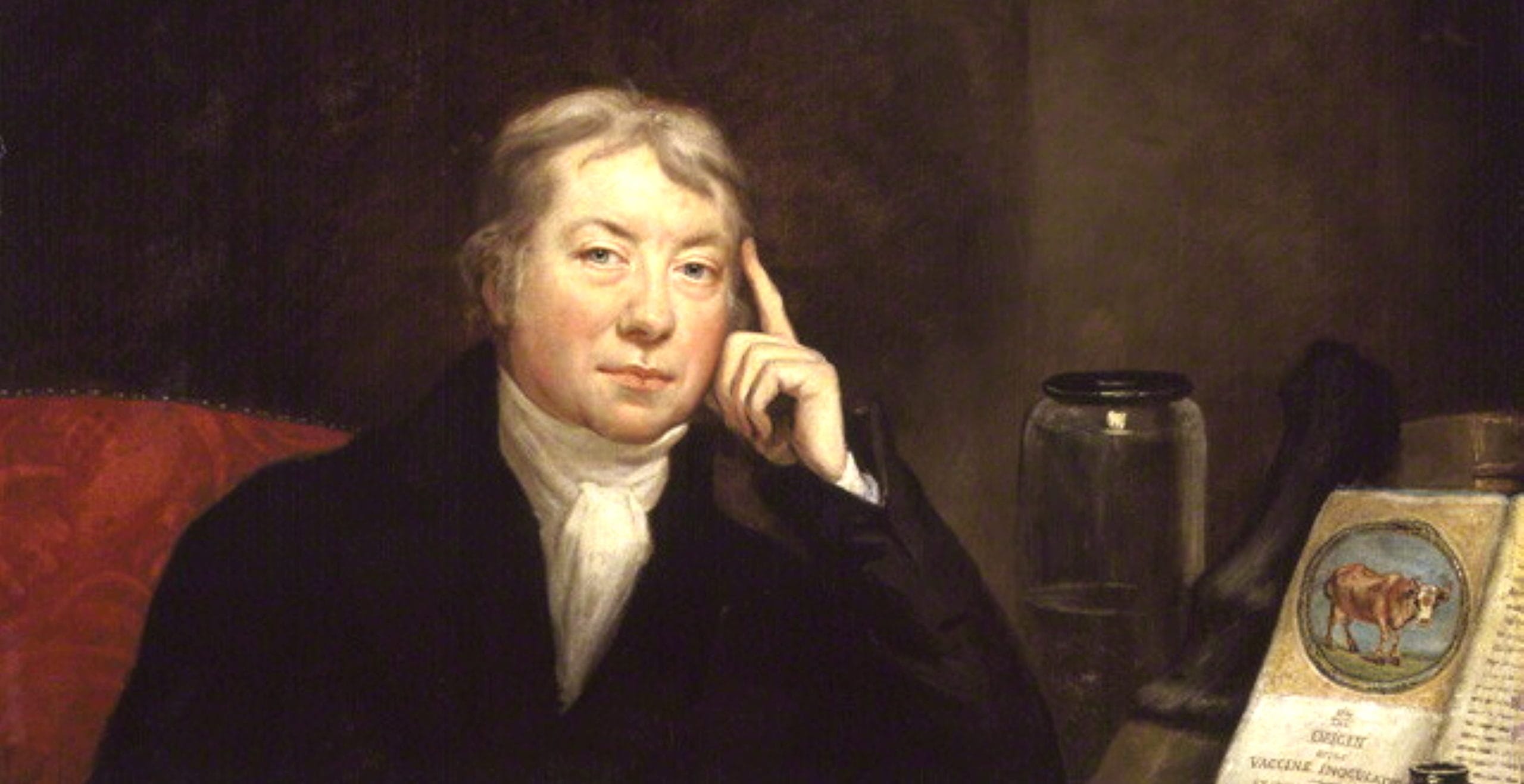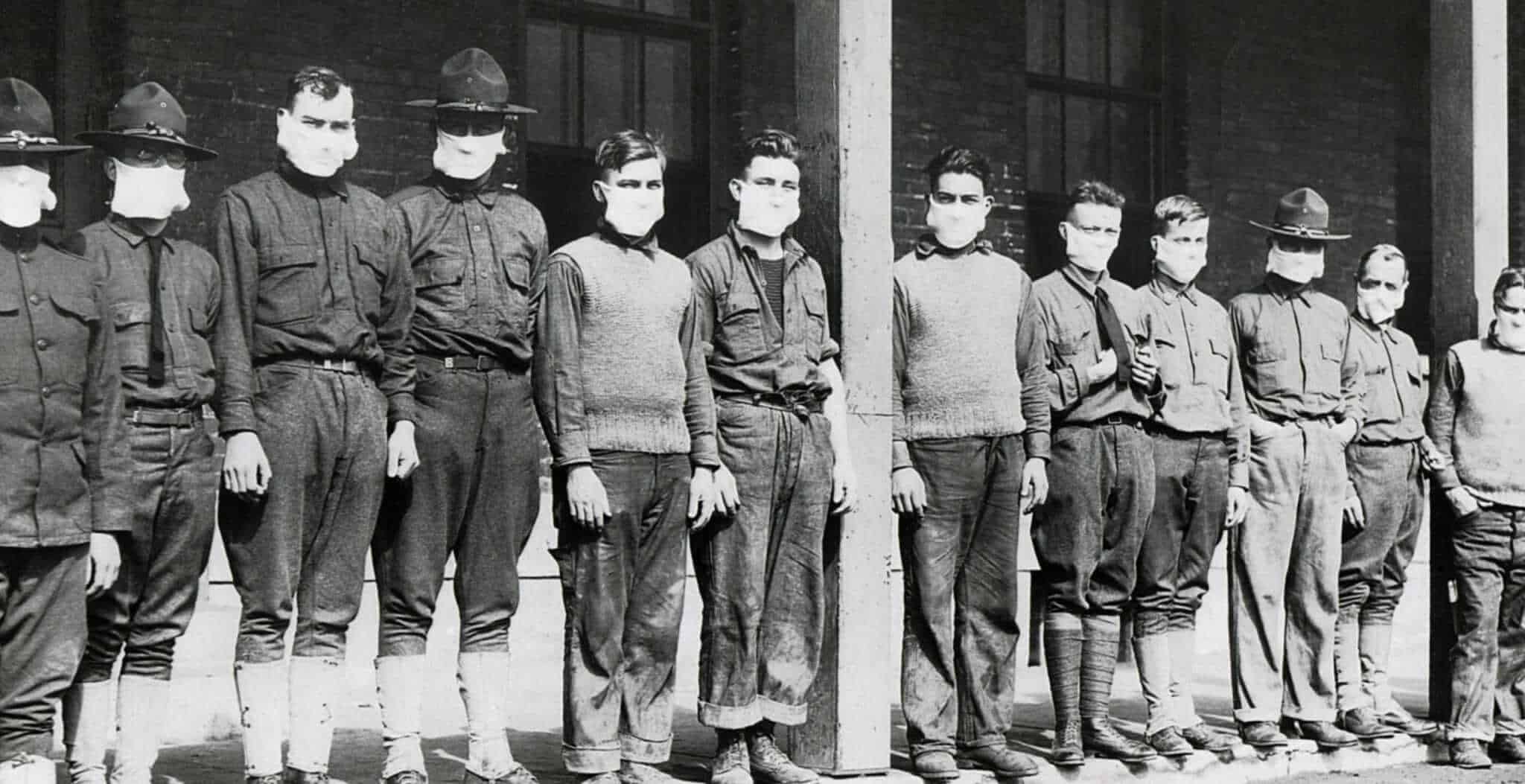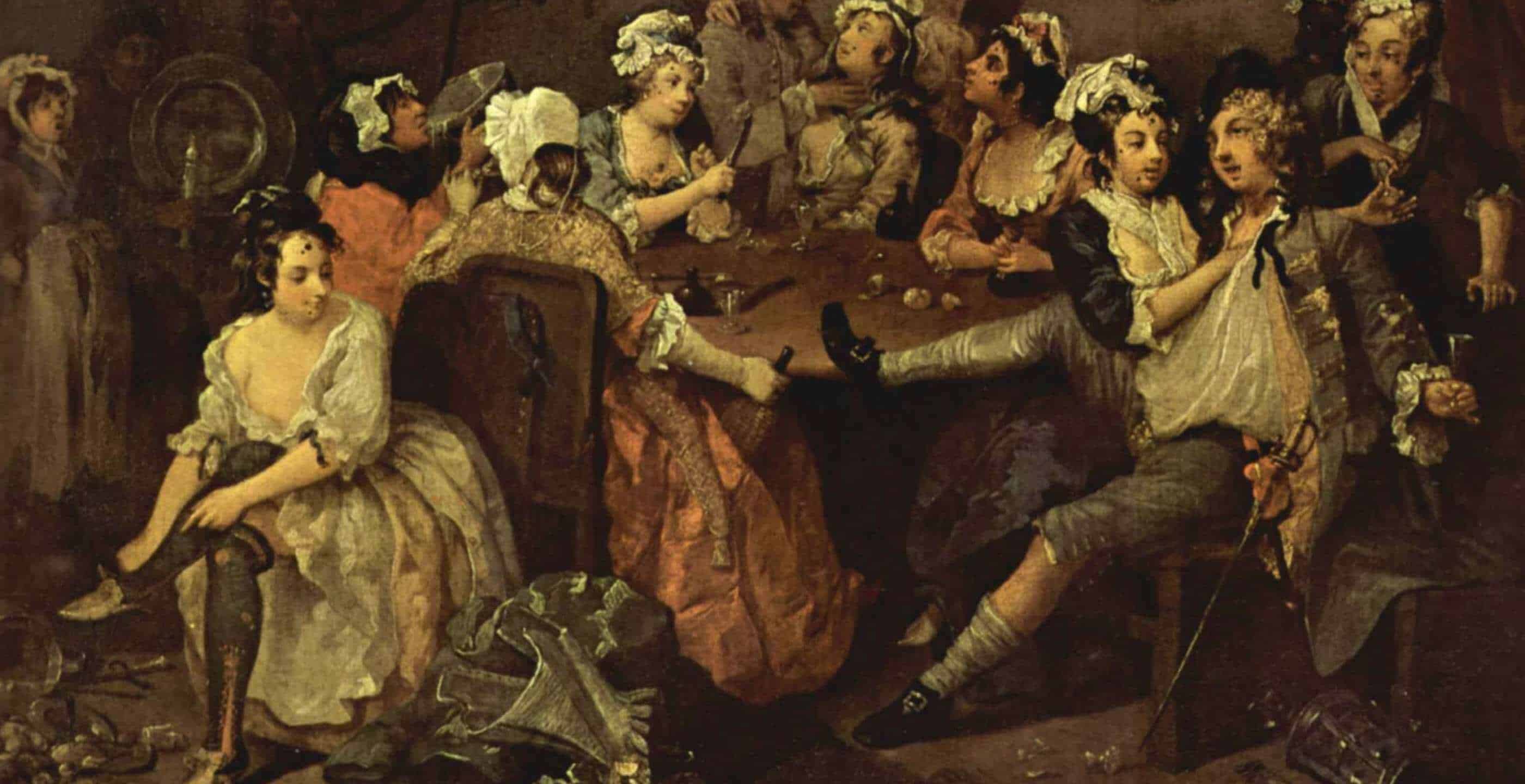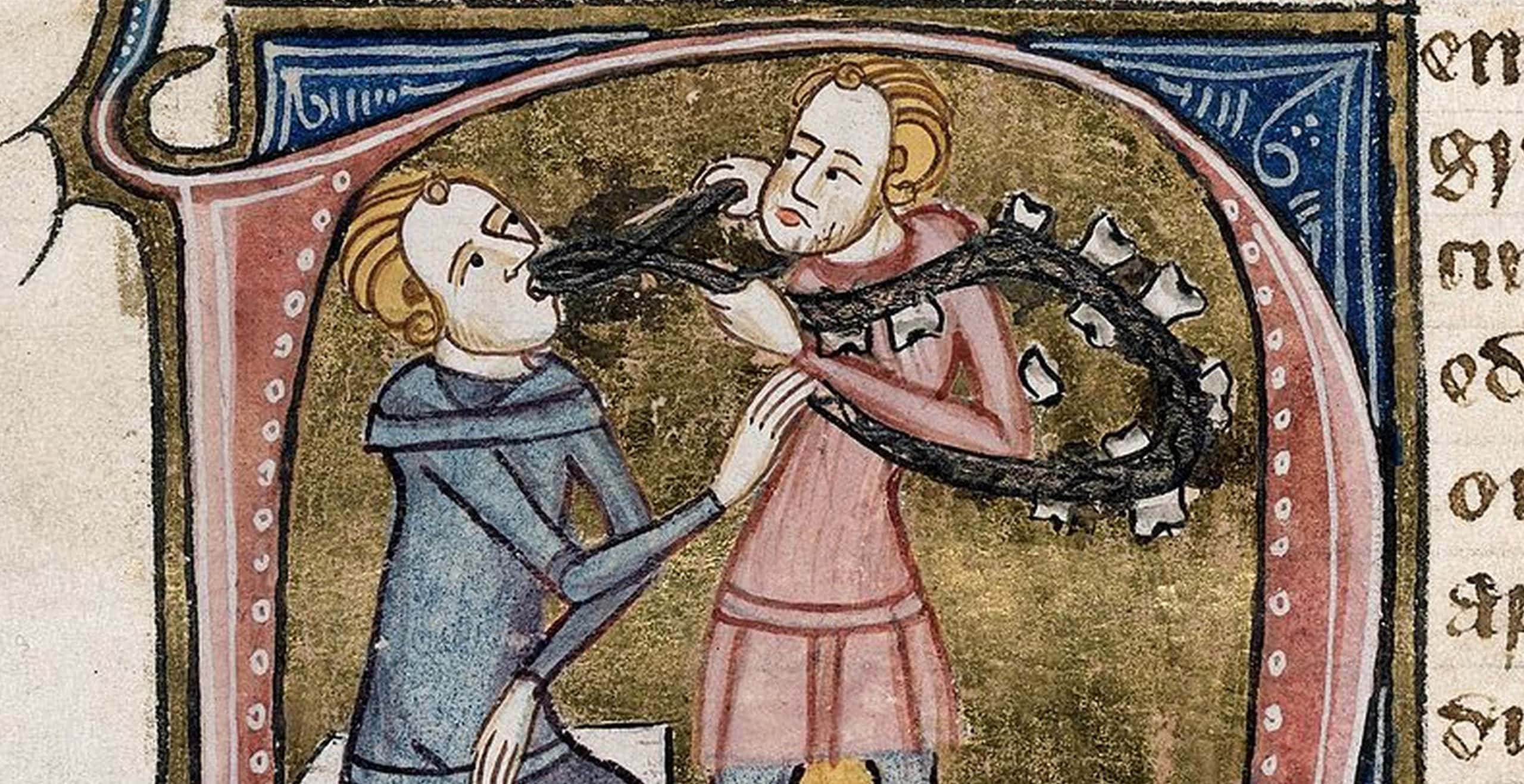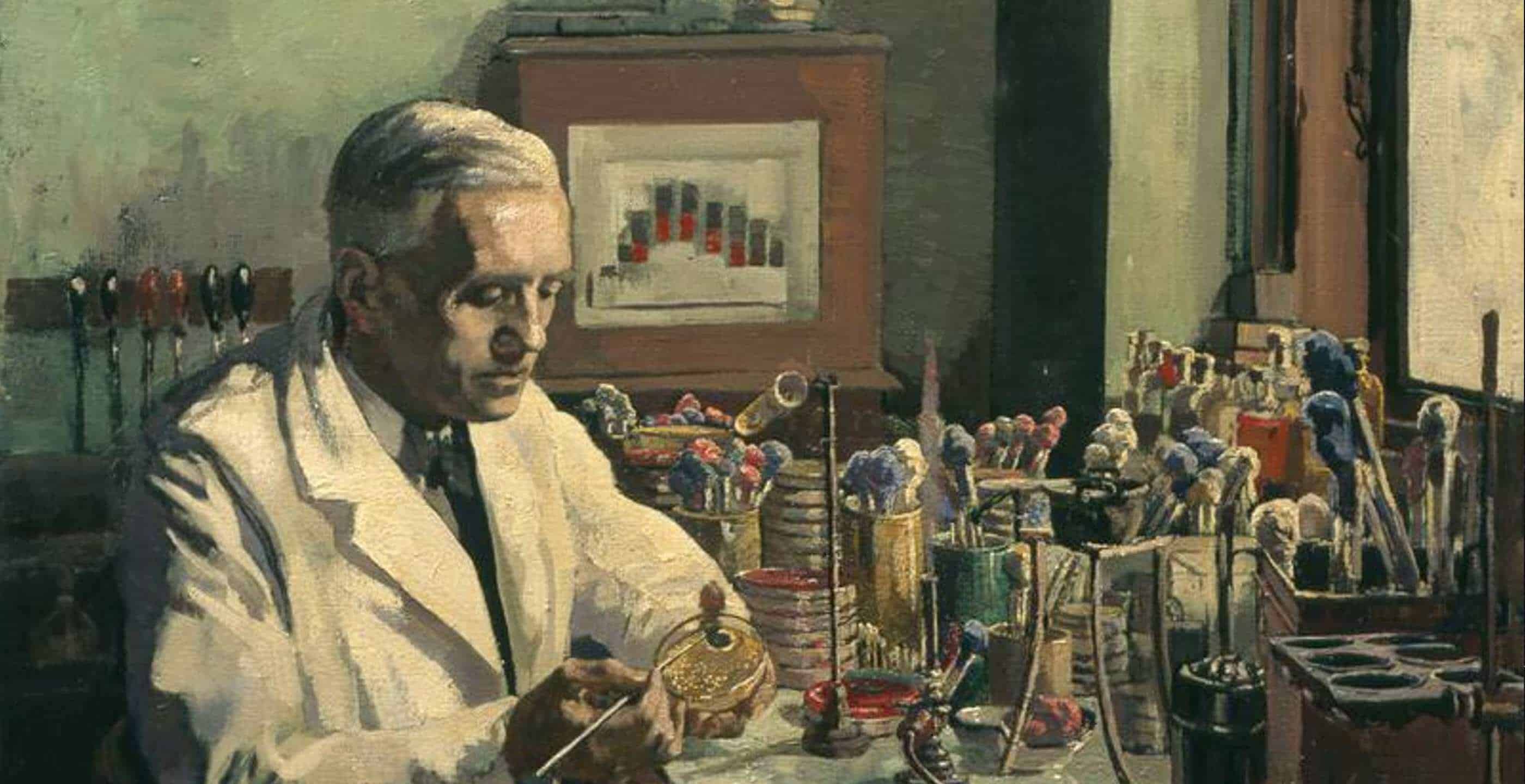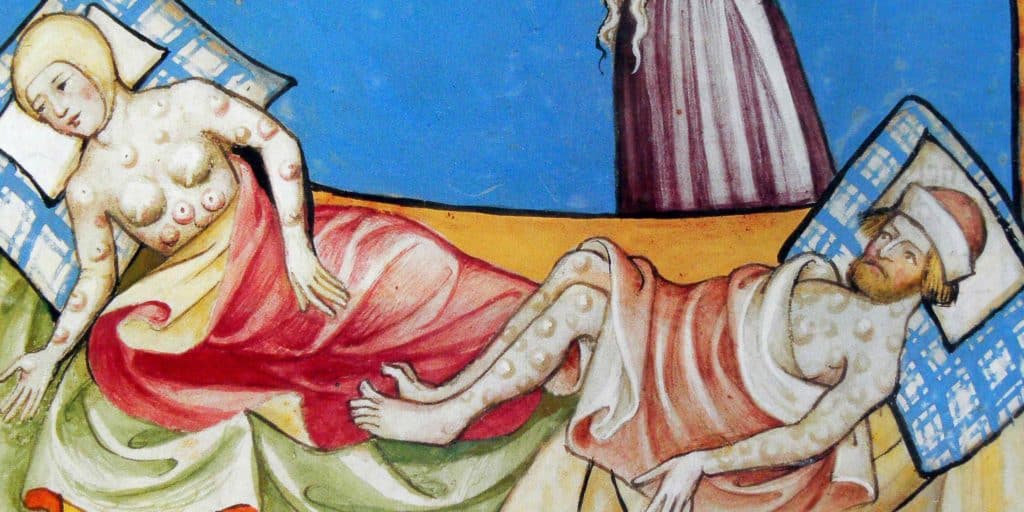Smallpox (Latin name ‘variola’ meaning ‘spotted’) was the most feared disease after the Plague until vaccination wiped it out in modern day Britain. A very infectious disease, the term “smallpox” was first used in Britain in the 15th century to distinguish variola from the “great pox”, syphilis.
There were two main types of smallpox, variola minor and variola major, variola minor producing a milder form of the disease. Mortality was high from smallpox and those who survived could also suffer long term complications such as facial scarring and blindness.
No-one was spared from the disease; Henry VIII’s fourth wife Anne of Cleeves and both his daughters, Mary and Elizabeth, survived the disease but were left scarred.
In Europe smallpox was a leading cause of death, and remained so until vaccination became a common practice towards the end of the 19th century. In 1796 Edward Jenner, an English country doctor, discovered that immunity to smallpox could be produced by inoculating a person with cowpox.
Improved vaccines and the practice of re-vaccination led to a substantial reduction in smallpox cases in Europe. The British government introduced compulsory smallpox vaccination in 1853.
However even after 1853 there were still smallpox outbreaks. An airborne disease transmitted through face-to-face exposure with an infected person or their personal clothing or bedding, smallpox was very contagious so isolation fever hospitals sited away from main areas of population were set up to treat patients.
The smallpox epidemic which began in 1881 placed great strain on available hospital beds in London. To ease the situation the Metropolitan Asylums Board (MAB) chartered two old wooden warships from the Admiralty to be converted into hospital ships; the Atlas, a 91-gun man-of war built in 1860 and the Endymion, a 50-gun frigate built in 1865.
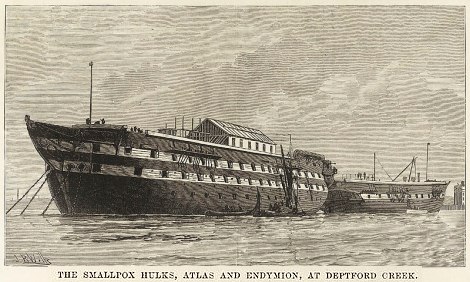
By the end of the outbreak in August 1882, almost 1,000 patients had been treated aboard the 120-bedded Atlas, of which 120 had died.
Initially moored off Deptford Creek in Greenwich, the ships were moved away from the city in 1883 to new moorings at Long Reach, 17 miles from London Bridge, where they were joined by the former cross-Channel paddle steamer Castalia in 1884. Designed with a double-hull to prevent rolling and therefore sea-sickness, she was sold to the MAB in 1883 and refitted as a hospital ship.
The three ships were moored in a line with the Endymion in the centre, and were connected to each other by a gangway which allowed for the movement and sway of the vessels.
Male patients were berthed on the Atlas which also had a chapel on deck; the Endymion was the administrative centre and also had a kitchen where all the food for the hospital ships was prepared. There were also living quarters for the Matron and some of the other staff on board. The Castalia housed around 150 female patients. Long Reach Pier connected the ships to the few service buildings on shore, which included accommodation for some of the nursing staff, storerooms and a laundry.
All the ships were heated by steam generated in the hold of the Endymion and connected to the other two ships by flexible piping. In 1886 electricity was installed on board the Atlas to reduce the risk of fire.
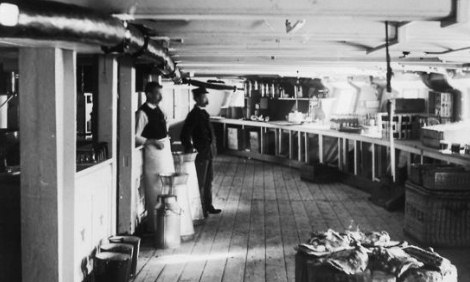
By 1893 the ships were in poor condition and proving costly to maintain. A fire broke out on Endymion in January 1902 and the ships were vulnerable to weather conditions. They were also at risk of collisions with other ships; indeed the Castalia was hit by SS Barrowmore in 1898. It was also proving difficult to restrain delirious smallpox patients from throwing themselves overboard.
It was decided to build a land-based smallpox hospital at Long Reach to replace the ships and provide more beds for patients. Building work on the Joyce Green Hospital began in 1901, just as another smallpox epidemic broke out in London.
The smallpox ships finally became redundant in 1903 when the Joyce Green and the other River Hospitals began to open.
After twenty years of service, the ships were auctioned off for scrap in 1904. Surprisingly the electricity apparatus was also scrapped and Joyce Green Hospital remained lit by gas until 1922.
